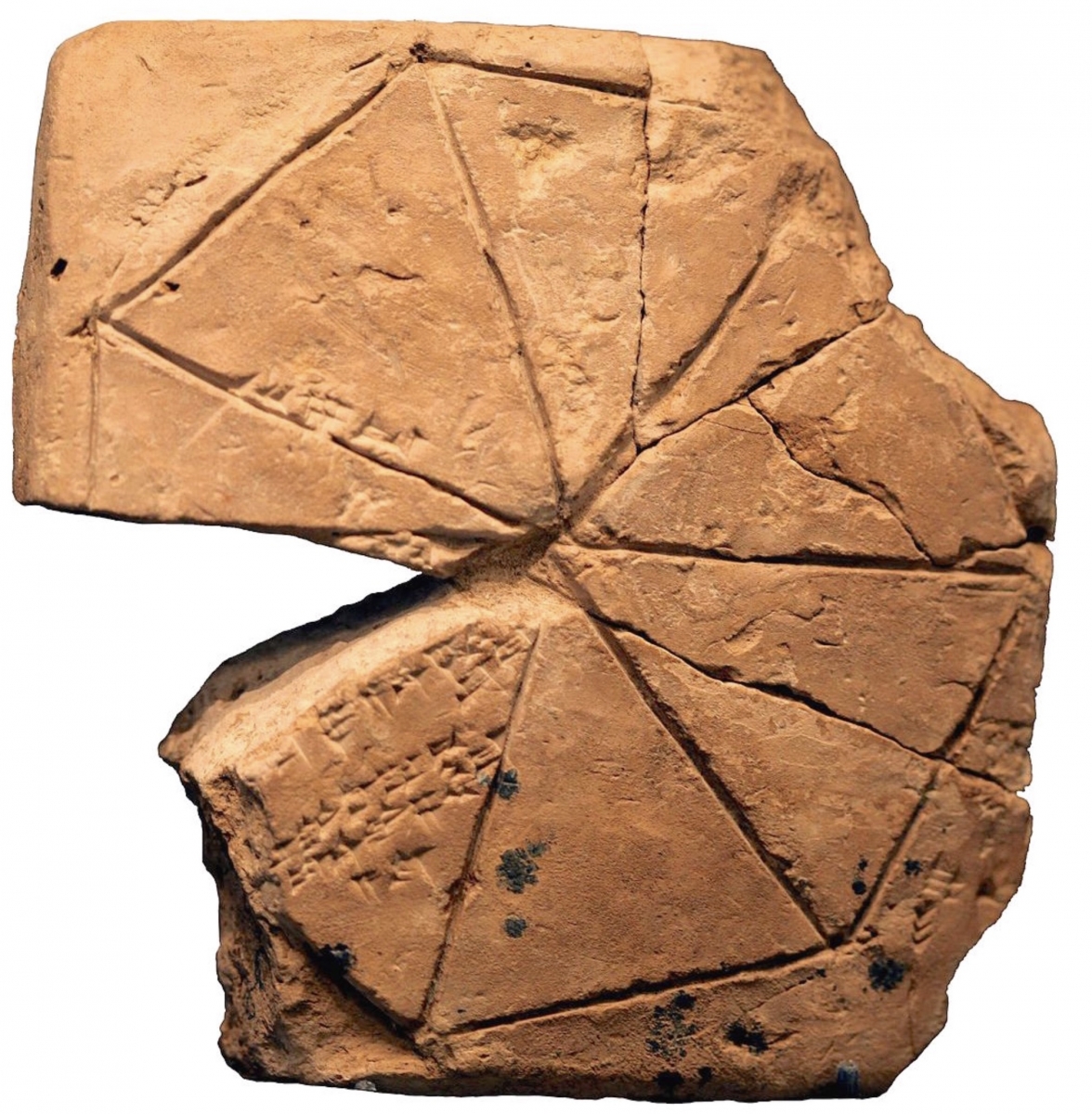- About MAA
- Membership
- MAA Publications
- Periodicals
- Blogs
- MAA Book Series
- MAA Press (an imprint of the AMS)
- MAA Notes
- MAA Reviews
- Mathematical Communication
- Information for Libraries
- Author Resources
- Advertise with MAA
- Meetings
- Competitions
- Programs
- Communities
- MAA Sections
- SIGMAA
- MAA Connect
- Students
- MAA Awards
- Awards Booklets
- Writing Awards
- Teaching Awards
- Service Awards
- Research Awards
- Lecture Awards
- Putnam Competition Individual and Team Winners
- D. E. Shaw Group AMC 8 Awards & Certificates
- Maryam Mirzakhani AMC 10 A Awards & Certificates
- Two Sigma AMC 10 B Awards & Certificates
- Jane Street AMC 12 A Awards & Certificates
- Akamai AMC 12 B Awards & Certificates
- High School Teachers
- News
You are here
Mathematical Treasure: Cuneiform Tablet Depicting Heptagon
A Babylonian Geometry problem of the surface of a heptagon divided into triangles, on a clay tablet belonging to a school for scribes in Susa at the first half of the 2nd millennium BCE. Note the fact that the scribe-teacher divided the polygon into seven isoscles triangles. For demonstration purposes, one such triangle would have been sufficient but for pedagogical reasons and a better understanding of the principle being used, a total covering of seven triangles is shown.

This 2016 image by internet user Rama shows object SB 13088 from the collections of the Louvre. It is available for use from Wikimedia Commons via a CC BY-SA 2.0 FR license.
Frank J. Swetz (The Pennsylvania State University), "Mathematical Treasure: Cuneiform Tablet Depicting Heptagon," Convergence (July 2021)




